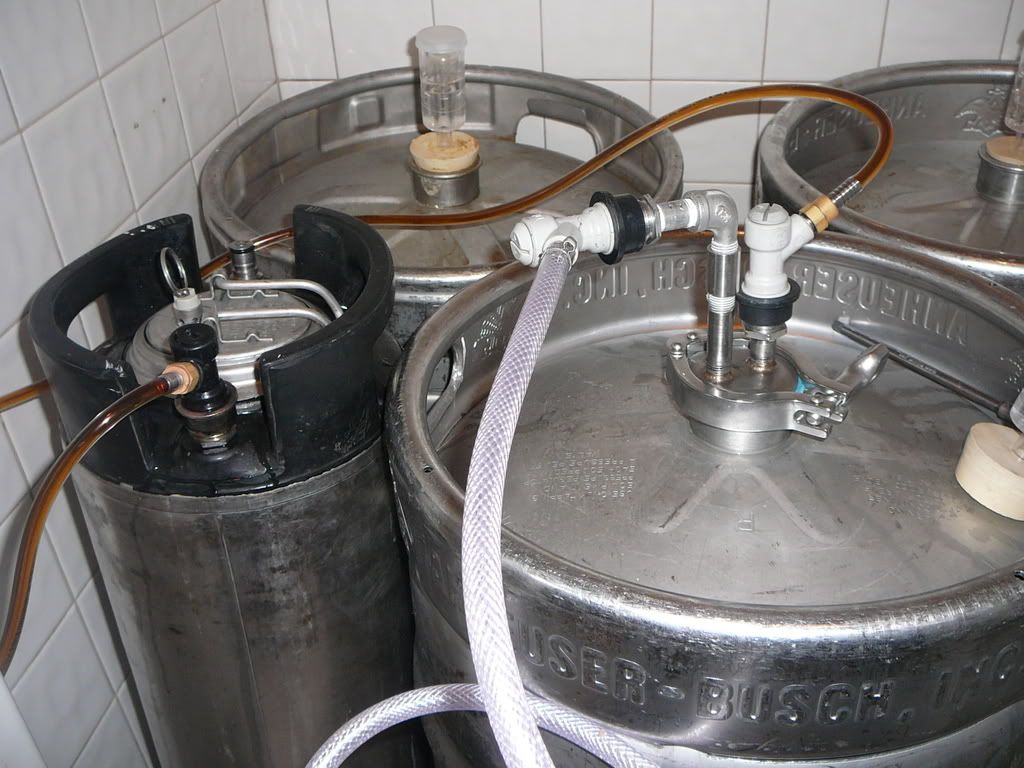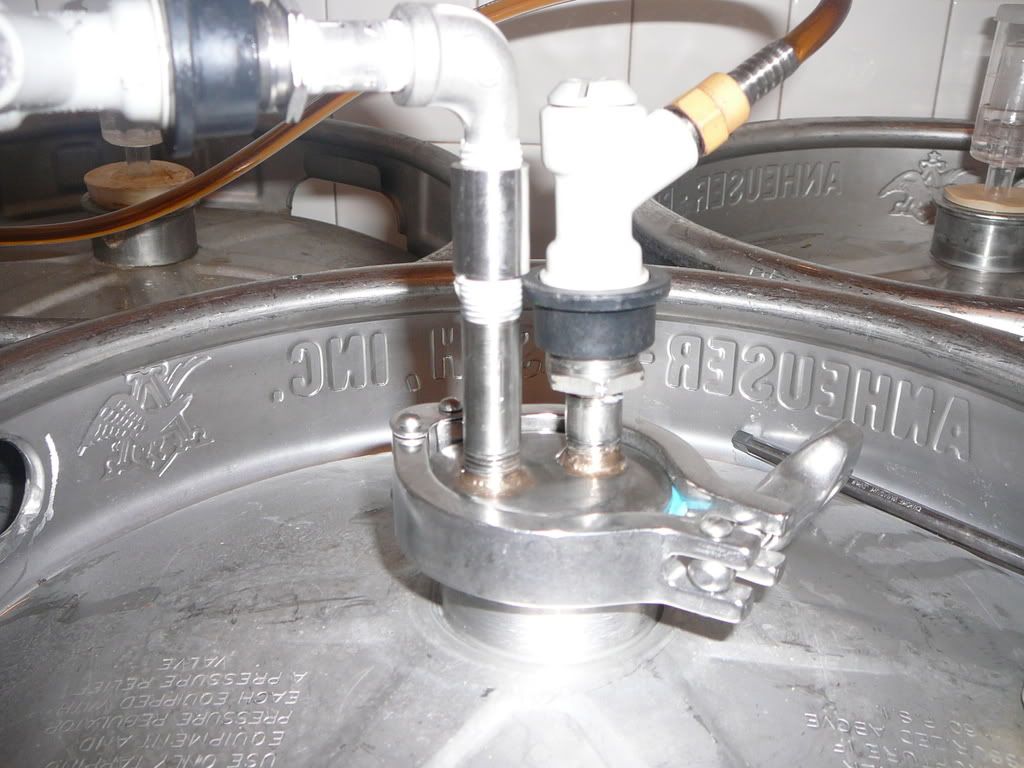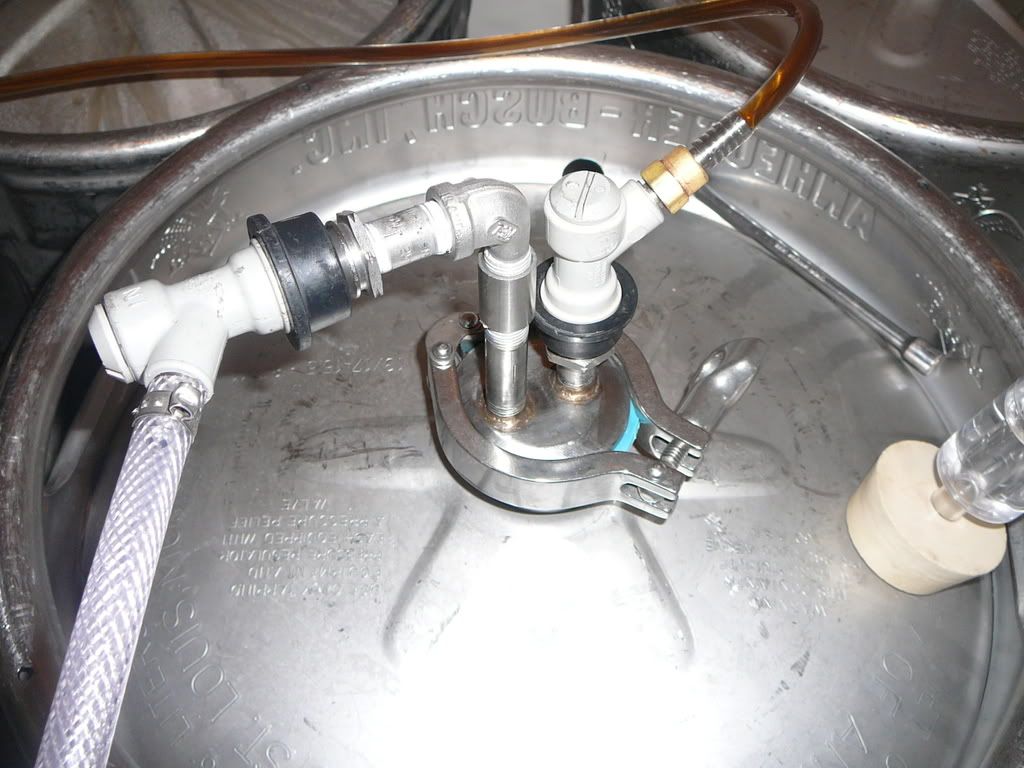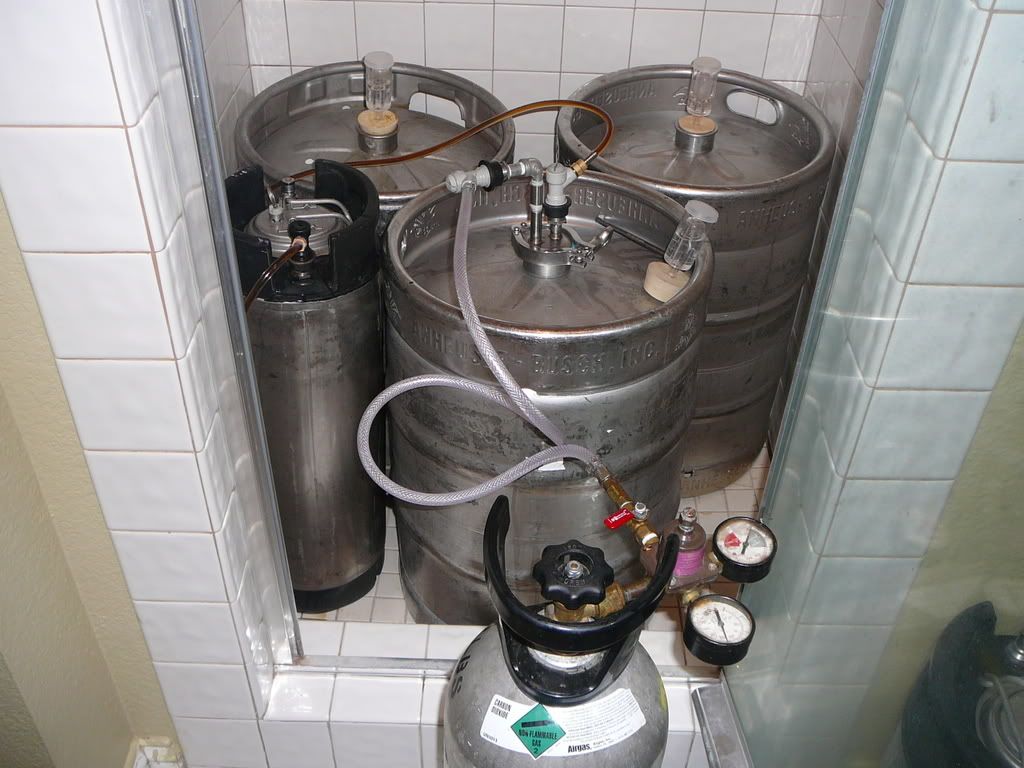sleepystevenson
Well-Known Member
I know I read a thread on here somewhere not too long ago about converting a 1/2 barrel keg to a fermentation vessel. Anybody out there use this method? Pros / cons?









pressure does force beer up the beer-out port, so you have to have it shut off (your preference, but I use a serving tap to test gravity). The gas-in port is what I use to let gas out. I took the check valve out so this is possible.nbspindel said:i see that in your signature link thread you've suggested to pointdexter some different parts. I couldnt find in that thread what parts are better than those you originally had. also, some questions about the conversion:
1. does the pressure not force the wort up the spear, essentially forcing wort into your spunding valve and not CO2?
Yes, as answered in the first question. The testing spigot is how I do it, but you can cap it off if you aren't worried about testing. Be sure it can handle the pressure or you will end up emptying your keg.nbspindel said:2. do you have to have a tap attached to beer out, or at least have it capped off somehow, to prevent the beer from 'serving' itself while under pressure?
nice shower! i've heard washing your hair with beer makes it silky and smooth. ha. no, but that looks like a great place to put that stuff. it isnt too much weight? if those are full, you're looking at maybe 500 lbs there. hope its on a slab.

Do you think it's feasible to ferment 5 gallon batches in a Sanke? Or would there be too much head space?
As much CO2 that is produced during fermentation, I would have no problem fermenting 5 gallons in a 15.5 gallon Sanke. Head space is really a worry after fermentation (unless you are fully purged and not open to atmosphere during your transfer such as into a secondary), unless we are talking wine... then it is important to always have a full vessel you have your drink in. CO2 forms a nice blanket on the liquid and if you smell it coming out your airlock you are good to go.
Has anybody tried just using a sanke coupler which has an adjustable safety relief valve for the spunding mechanism?
Enter your email address to join: